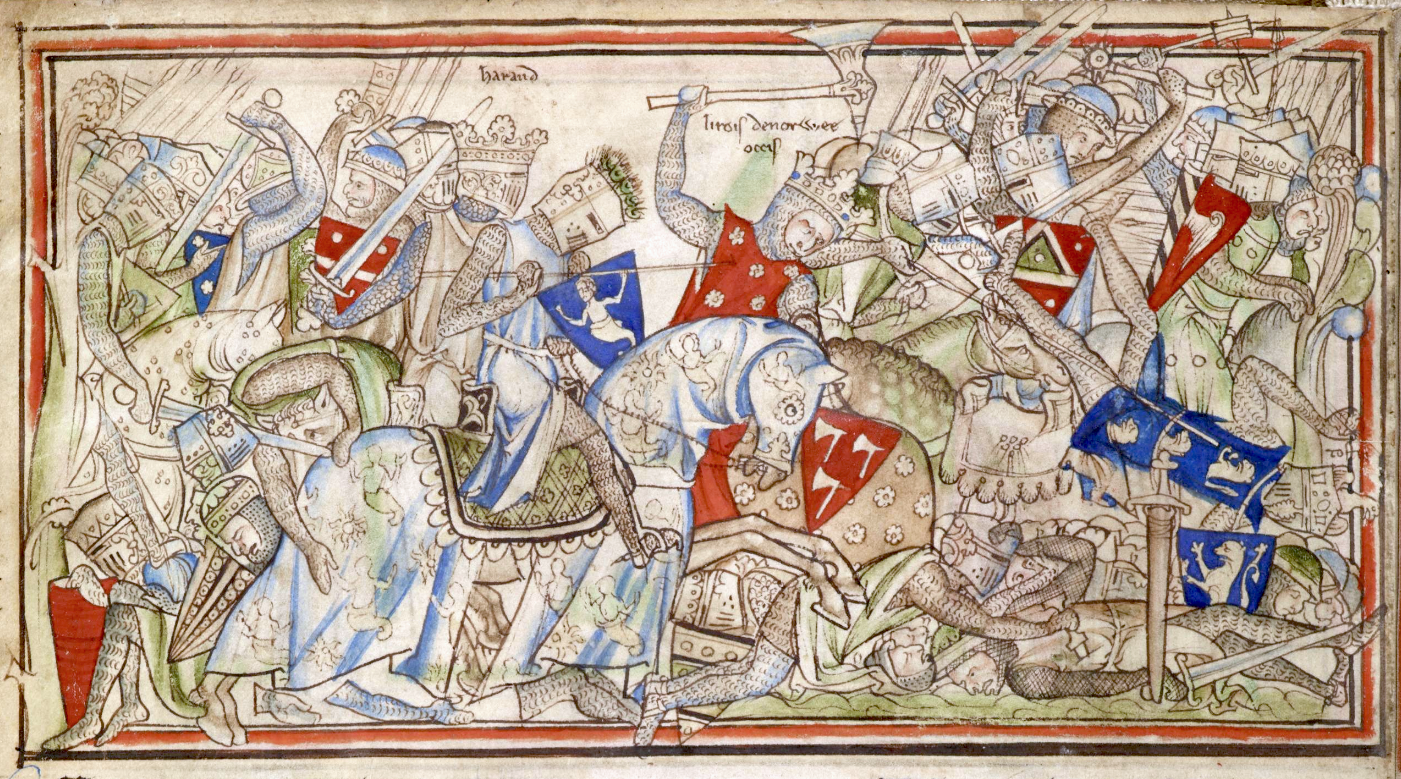Eystein Orre on:
[Wikipedia]
[Google]
[Amazon]
Eystein Orre ( Eystein was betrothed to King Harald's daughter by Elisiv of Kiev, Maria and according to Heimskringla was "best beloved by the king of all the lendermen". Eystein was among those to accompany Harald in his invasion of England in 1066.
Harald and his army first encountered resistance at
Eystein was betrothed to King Harald's daughter by Elisiv of Kiev, Maria and according to Heimskringla was "best beloved by the king of all the lendermen". Eystein was among those to accompany Harald in his invasion of England in 1066.
Harald and his army first encountered resistance at
Old Norse
Old Norse, Old Nordic, or Old Scandinavian, is a stage of development of North Germanic languages, North Germanic dialects before their final divergence into separate Nordic languages. Old Norse was spoken by inhabitants of Scandinavia and t ...
: ''Eysteinn Orri''; died 25 September 1066) was a Norwegian noble who was killed at the Battle of Stamford Bridge in 1066. Eystein was betrothed to King Harald's daughter by Elisiv of Kiev, Maria and according to Heimskringla was "best beloved by the king of all the lendermen". Eystein was among those to accompany Harald in his invasion of England in 1066.
Harald and his army first encountered resistance at
Eystein was betrothed to King Harald's daughter by Elisiv of Kiev, Maria and according to Heimskringla was "best beloved by the king of all the lendermen". Eystein was among those to accompany Harald in his invasion of England in 1066.
Harald and his army first encountered resistance at Scarborough Scarborough or Scarboro may refer to:
People
* Scarborough (surname)
* Earl of Scarbrough
Places Australia
* Scarborough, Western Australia, suburb of Perth
* Scarborough, New South Wales, suburb of Wollongong
* Scarborough, Queensland, sub ...
, where the townsfolk refused to surrender. Harald resorted to burning down the town and this action led to other Northumbrian towns surrendering to him. The army sailed further down the Humber until they disembarked at Riccall
Riccall is a village and civil parish situated in the Selby District of North Yorkshire, England, lying to the north of Selby and south of York.
It was historically part of the East Riding of Yorkshire until 1974.
According to the 2011 cens ...
. Harald's army then encountered the earls Morcar and Edwin
The name Edwin means "rich friend". It comes from the Old English elements "ead" (rich, blessed) and "ƿine" (friend). The original Anglo-Saxon form is Eadƿine, which is also found for Anglo-Saxon figures.
People
* Edwin of Northumbria (died ...
; they fought against Harald's invading army two miles (3 km) south of York
York is a cathedral city with Roman origins, sited at the confluence of the rivers Ouse and Foss in North Yorkshire, England. It is the historic county town of Yorkshire. The city has many historic buildings and other structures, such as a ...
at the Battle of Fulford
The Battle of Fulford was fought on the outskirts of the village of Fulford just south of York in England, on 20 September 1066, when King Harald III of Norway, also known as ''Harald Hardrada'' ("harðráði" in Old Norse, meaning "hard rule ...
on 20 September. The battle was a decisive victory for the invaders, and led York to surrender to their forces on 24 September.DeVries (1999) pp. 250–261
Early on 25 September, King Harald and Tostig left for York again, leaving a third of their forces behind. Eystein, along with Prince Olaf were among those left behind at Riccall to protect the ships, however a messenger came back calling for reinforcements as the English had intercepted the Norwegians at Stamford Bridge Stamford Bridge may refer to:
* Stamford Bridge, East Riding of Yorkshire, a village in England
** Battle of Stamford Bridge, 25 September 1066
* Stamford Bridge (bridge), a bridge in the village of Stamford Bridge
* Stamford Bridge (stadium), in L ...
. Eyestein was able to reach his comrades, however King Harald had already been killed. Some of Eyestein's men were said to have collapsed and died of exhaustion upon reaching the battlefield. These men, unlike their comrades, were fully armed for battle. Their counter-attack, described in the Norwegian tradition as "Orre's Storm", briefly stalled the English advance, but was soon overwhelmed and Orre was slain. With the Norwegian army routed and pursued by the English army, some of the fleeing Norsemen drowned in the rivers.''Anglo-Saxon Chronicles'', p. 199
Notes
Citations
Sources
* {{Cite book, author=DeVries, Kelly, author-link=Kelly DeVries, year=1999, title=The Norwegian Invasion of England in 1066, publisher=Boydell & Brewer Ltd, isbn=978-0-85115-763-4 11th-century births 1066 deaths 11th-century Norwegian nobility Norwegian military personnel killed in action Vikings killed in battle